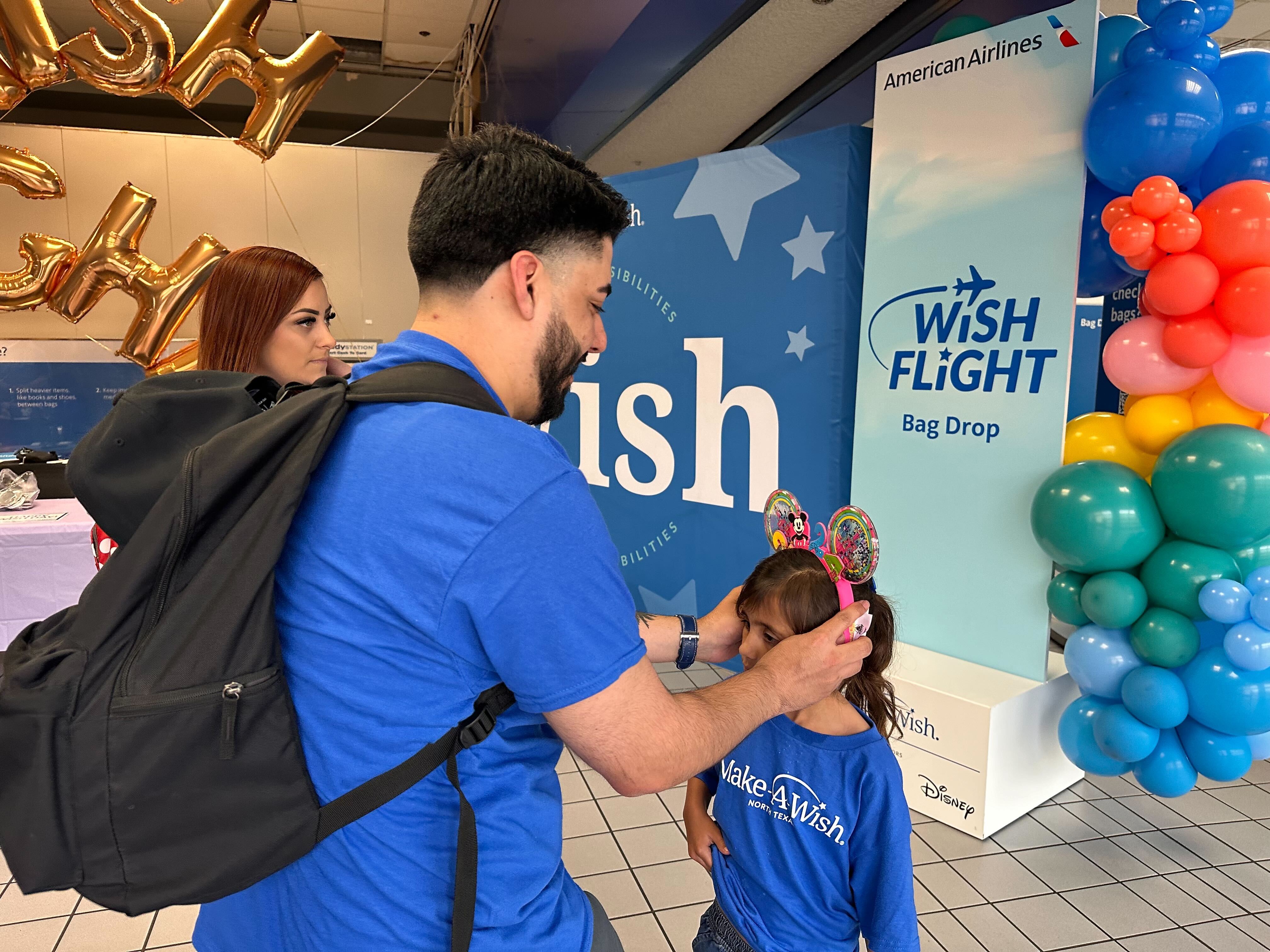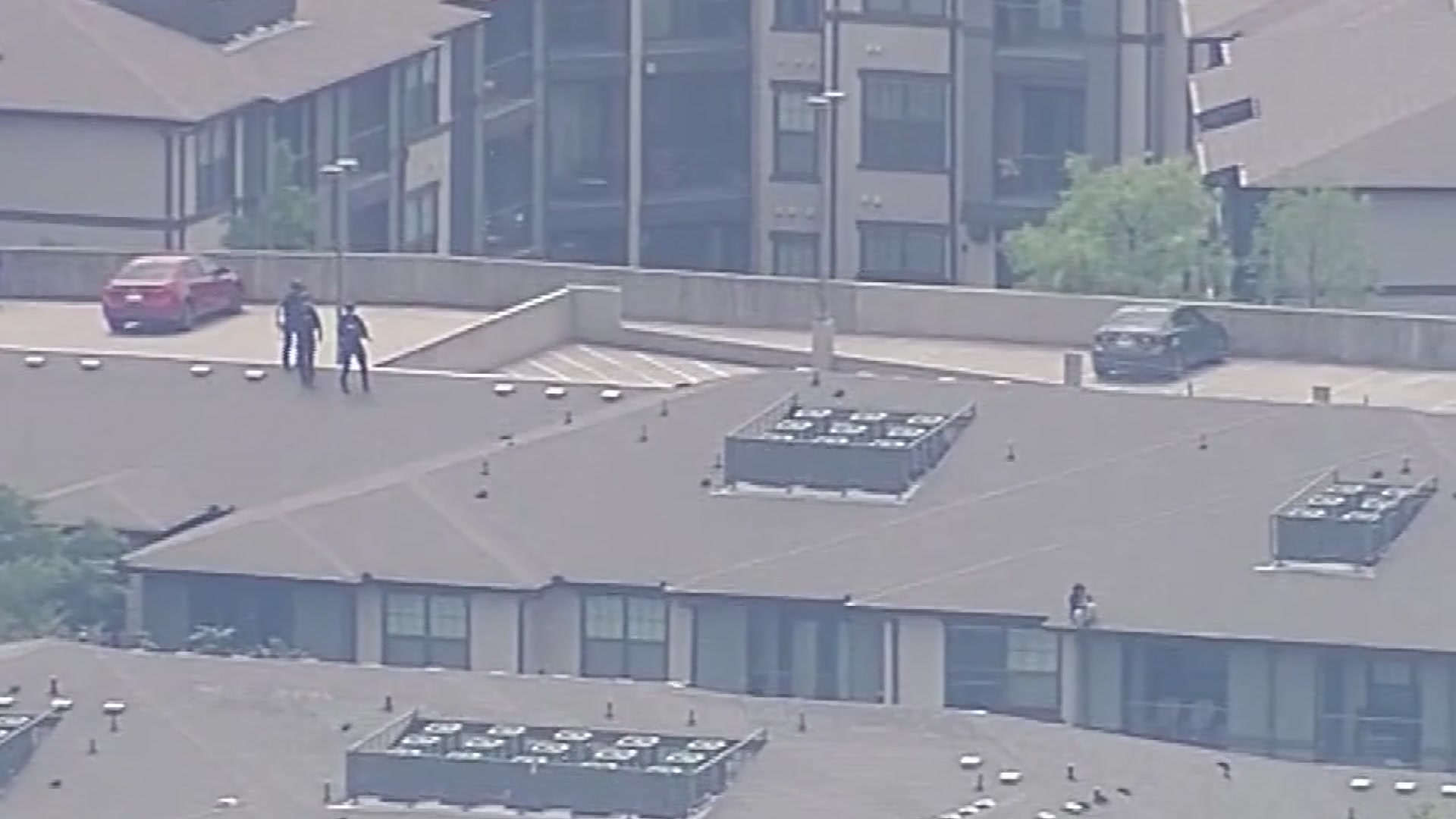The driver of a parade float involved in a train wreck that killed four war veterans in West Texas told investigators the oncoming train appeared to be stationary, and that he didn't notice anything was wrong until he saw people jumping from the float, according to documents released Wednesday.
Dale Hayden has never spoken publicly about the Nov. 15 crash in Midland. But he told federal investigators he was focused on his left-side rearview mirror as he crossed the tracks, looking for a bump in the intersection so he could provide the veterans riding on the flatbed trailer a smoother ride, according to documents the National Transportation Safety Board released.
As he looked through his right window, the oncoming Union Pacific train appeared to have stopped, he said. It wasn't until he looked in his rearview mirror that he saw people jumping from the float.
"When I looked in the right mirror, that's when I saw the flashing lights. But at first it didn't register. It just -- to me there was just flashing lights, more flashing lights," Hayden told investigators in a Feb. 20 interview.
"But (the train) looked like it was just sitting there. It didn't -- I didn't see it moving or anything. To me, it was just sitting there."
The NTSB has said the train was traveling about 62 mph at the time of the collision and that warning lights on the tracks appeared to be working.
The flatbed trailer fitted with chairs was carrying veterans and their spouses as part of a three-day weekend of banquets, deer hunting and shopping to honor the troops wounded in Iraq and Afghanistan. They were heading to a banquet, a flag-waving crowd cheering them on, when the crash occurred.
Local
The latest news from around North Texas.
Hayden's interview was among hundreds of pages of information released Wednesday by the NTSB and compiled during the federal agency's investigation of the crash. His attorney has said that Hayden -- himself a military veteran -- was devastated by the accident.
Hayden was driving the second of two parade trucks that day. He told investigators the first truck had a loud train-like horn that made it difficult to tell if the train was blowing its horn. And as the train approached, he said, "I looked in the mirror and just saw everybody started to jump off, and then bam."
The first truck's driver, James Atchison, said he also couldn't remember hearing the train horn. As he cleared the intersection, he didn't remember seeing the flashing lights or hearing the warning bells of the crossing, the documents show.
The train's conductor, Nathan Scott, told investigators that when he saw the second truck pull onto the tracks, he knew the train was going to hit it. He said he couldn't quite see what was on the trailer at the time, but once he saw it was carrying people, operators put the train into emergency mode.
"By then it was too late. We cooked the back of the trailer. I knew we killed two almost instantly. We saw them jump off right in front of us. I saw them fall in front of us and it was -- they disappeared," Scott told investigators in an interview two days after the crash.
Four veterans were killed in the crash: Marine Chief Warrant Officer 3 Gary Stouffer, 37; Army Sgt. Maj. Lawrence Boivin, 47; Army Sgt. Joshua Michael, 34; and Army Sgt. Maj. William Lubbers, 43. More than a dozen people were injured.
Survivors' testimonies given to police detectives minutes after the accident reflect the confusion and panic of the few seconds preceding the impact.
"I saw the arm and people were yelling: `there's a train', and then the railroad arm came down and it was knocking off chairs, the train was still coming in I was dead center with it," said a victim identified as 11A who was interviewed the night of the accident in the hospital emergency room.
The NTSB report does not identify the victims by name.
A veteran identified as victim 3A told detectives, "we did not jump, I can't jump." According to the report, his right leg had been injured in combat.
"People were wanting to jump off, and people tried, but it was a little too late," he told detectives. "I was lying on ground and looked around for my wife."
Engineer Simon Terrazas Jr. told investigators he often sees flatbed trailers crossing tracks, but didn't initially realize there were people on the truck.
"It was moving very slow," Terrazas said. "My natural inclination is, `OK, he's about to stop, he's moving slow enough to be stopping.' And of course, you know, I start blowing my horn and he just never stopped, he just kept going."
According to a report from the NTSB shortly after the collision, the first float was exiting the tracks when the warning bells and signals were activated -- 20 seconds before the accident.
The second float entered the tracks several seconds after the warning system went off and the guardrail was lowering, the NTSB said. Nine seconds before the crash, the train sounded its horn, a blaring that lasted four seconds, the agency said.
Union Pacific spokeswoman Raquel Espinoza said in a statement Wednesday that the company could not comment on the new documents, but added: "We can say the accident would have been avoided had the truck not proceeded through the red traffic light and active crossing warning signals."
Most of the couples on the float are suing Union Pacific, alleging negligence. Kevin Glasheen, a Lubbock attorney representing some of those couples, said it didn't seem unusual that Hayden believed the train was stationary.
"That's why we have lights and gates, because drivers aren't able to perceive a high-speed train and process that information to safely cross railroad tracks," Glasheen said, adding that had the lights and gates been activated "five or 10 seconds earlier, then the accident wouldn't have happened."
Juan Carlos Llorca reported from El Paso, Texas.



